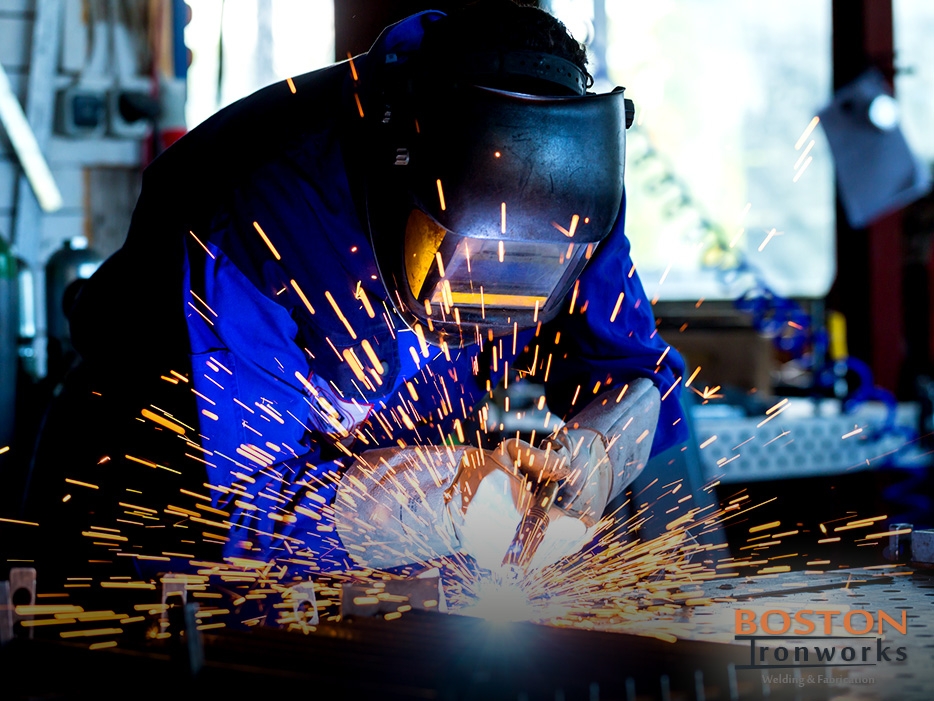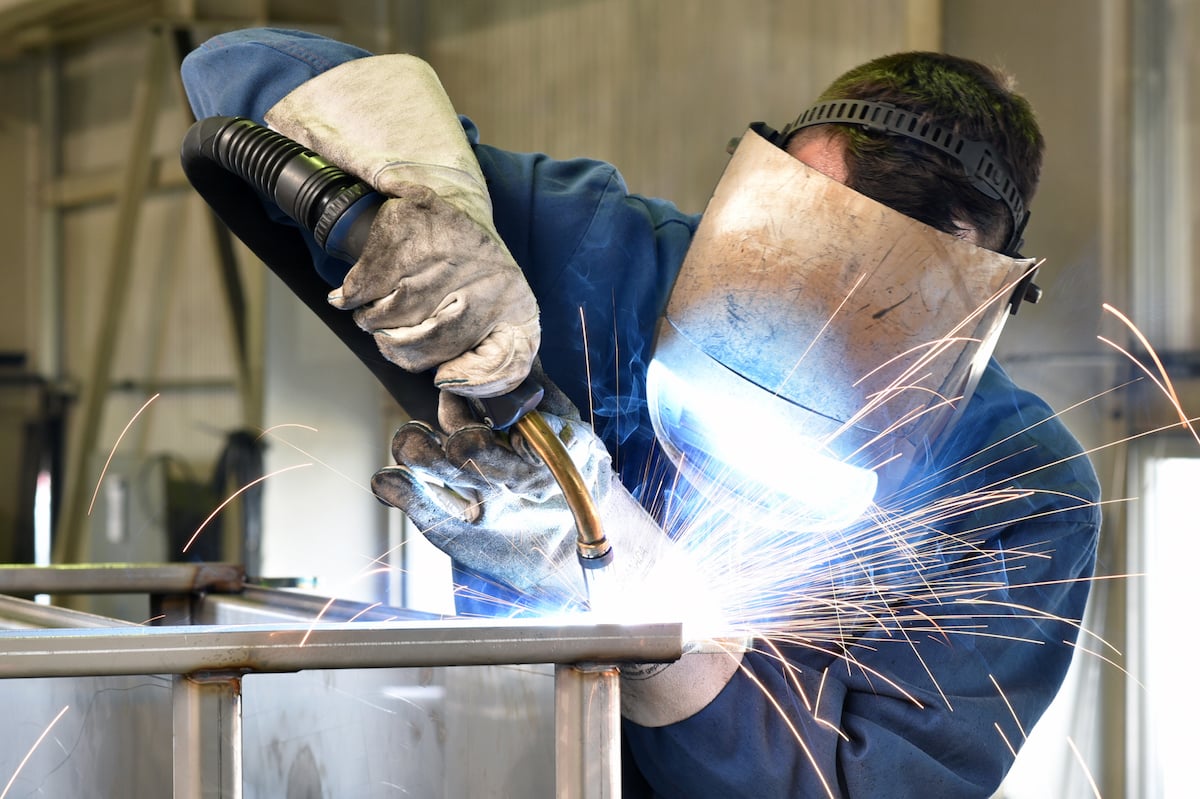Typical Welding Repair Issues and Just How to Address Them Effectively
Welding fixings commonly come across a variety of concerns that can threaten the integrity of the last item. Common issues include poor penetration, porosity, and misalignment, amongst others. Each issue offers one-of-a-kind obstacles that call for particular approaches for resolution. Comprehending these problems is vital for welders intending to boost their abilities and outcomes. This conversation will discover these common welding fixing concerns and efficient methods to resolve them.
Poor Penetration
Inadequate infiltration takes place when the weld steel fails to totally fuse with the base material, causing weak joints and possible structural failings. This problem commonly comes from inadequate heat input, wrong electrode angle, or inappropriate welding speed. Welders might come across poor penetration as a result of a mistake of the needed parameters for a certain material density or kind. Furthermore, contamination on the base product's surface area can impede effective bonding, aggravating the problem. To resolve inadequate penetration, welders must guarantee proper settings on their devices and keep a clean job surface. Routine assessment of welds is advised to identify any type of shortages early, permitting timely corrections and the prevention of compromised structural honesty in bonded settings up.
Porosity
Porosity is a typical issue in welded joints that shows up as tiny gas bubbles caught within the weld steel. This issue can compromise the honesty of the weld, bring about reduced strength and possible failure under stress. Belgrade Fabrication. Porosity typically emerges from contamination, dampness, or incorrect welding strategies, which enable gases to get away right into the liquified weld swimming pool. To address porosity, welders ought to guarantee appropriate surface area prep work, maintain a tidy workplace, and use appropriate welding specifications. Furthermore, selecting the ideal filler product and securing gas can minimize gas entrapment. Routine examination and screening of welds can aid determine porosity early, assuring prompt corrective activities are taken, thus preserving the quality and integrity of the bonded structure
Imbalance
Misalignment in welding can emerge from numerous factors, including incorrect configuration and thermal expansion. Understanding the origin is vital for efficient resolution. Several adjustment strategies are available to straighten components and ensure architectural integrity.
Reasons of Imbalance
Welding misalignment often originates from a variety of underlying concerns that can compromise structural integrity. One main reason is incorrect fit-up of parts before welding, which can cause gaps and irregular surfaces. Variants in thermal expansion throughout the welding process can additionally result in distortion, specifically if the materials being joined have various coefficients of expansion. In addition, insufficient fixturing and securing may fall short to hold elements firmly in position, leading to motion throughout welding. Badly maintained devices, consisting of welding machines and tools, may present disparities in the weld bead, more adding to misalignment. Finally, driver mistake, originating from not enough training or experience, can also play a significant role in creating misaligned welds.
Modification Methods Offered
Attending to imbalance properly calls for a combination of corrective methods customized to the particular problems at hand. One common method is the use of components or jigs to hold components in the appropriate setting throughout welding, making certain regular placement. Furthermore, preheating the materials can help in reducing distortion and boost fit-up. For substantial imbalance, mechanical adjustment methods, such as utilizing hydraulic jacks or clamps, can be utilized to deal with the setting prior to welding. Post-weld warm treatment might additionally be essential to eliminate anxieties triggered by imbalance. Finally, careful evaluation and modification throughout the setup stage can stop misalignment concerns from becoming significant problems, promoting a smoother welding procedure and boosting total structural integrity.
Distortion
Distortion is an usual difficulty in welding that can develop from numerous factors, including uneven home heating and cooling. Comprehending the sources of distortion is important for implementing effective avoidance methods. Addressing this issue not just enhances structural integrity but also improves the overall top quality of the weld.
Reasons for Distortion
When based on the extreme warmth of welding, products often go through adjustments that can bring about distortion. This sensation mainly arises from thermal development and tightening during the welding process. As the weld area warms up, the product expands; upon air conditioning, it gets, which can develop internal anxieties. In addition, uneven home heating throughout a workpiece can aggravate these stress and anxieties, resulting in warping or flexing. The kind of product additionally plays a considerable duty; metals with varying thermal conductivity and coefficients of growth may react in different ways, bring about unforeseeable distortions. Moreover, poor joint design and insufficient fixturing can add to imbalance during welding, raising the likelihood of distortion. Comprehending these causes is important for effective welding repair work and avoidance approaches.
Prevention Techniques
Efficient prevention techniques for distortion throughout welding concentrate on managing warm input and guaranteeing correct joint design. Keeping a regular warmth input resource aids to reduce thermal expansion and contraction, which can result in distortion. Making use of methods such as preheating the workpiece can also reduce the temperature level gradient, promoting consistent heating. In addition, selecting appropriate joint designs, such as T-joints or lap joints, can improve security and decrease stress concentrations. Implementing proper fixturing to protect the work surfaces in position additionally aids in preserving positioning throughout the welding procedure. Staggered welding series can disperse heat extra uniformly, stopping localized distortion. By applying these methods, welders can greatly decrease the likelihood of distortion and boost the total top quality of their welds.
Breaking
Cracking is a typical problem run into in welding fixings, typically resulting from different variables such as improper air conditioning rates, material selection, or inadequate joint preparation. The occurrence of cracks can greatly jeopardize the integrity of the weld, resulting in prospective failures throughout procedure. To resolve this problem, welders have to first evaluate the origin, ensuring that products are suitable and suitably selected for the particular application. In addition, controlling the cooling rate during the welding procedure is essential; rapid air conditioning can induce tension and lead to fracturing. Appropriate joint style and preparation also add to reducing the risk. Implementing these strategies can enhance weld top quality and durability, eventually decreasing the likelihood of breaking in ended up weldments.

Incomplete Fusion
A considerable issue in welding repair work is insufficient blend, which takes place when the weld metal does not sufficiently bond with the base material or previous weld passes - Belgrade Fabrication. This problem can lead to weaknesses in the joint, potentially compromising the stability of the welded framework. Factors adding to insufficient blend consist of insufficient warm input, inappropriate welding technique, and contamination of the surface areas being joined. To resolve this problem effectively, welders should assure appropriate pre-weld cleansing and surface area prep work, along with adjust their welding parameters to accomplish appropriate infiltration and combination. Normal assessment throughout the welding procedure can likewise assist determine incomplete combination early, enabling prompt restorative measures to improve the general high quality of the weld
Overheating
While welding repair services can boost architectural integrity, overheating offers a substantial challenge that can result in product degradation. Extreme warmth during welding can modify the mechanical buildings of steels, leading to reduced strength, click for source boosted brittleness, and warping. This phenomenon is particularly crucial in high-stress applications where architectural reliability is paramount. Determining overheating can entail visual evaluations for staining or distortion, in addition to keeping an eye on temperature level throughout the welding procedure. To reduce the risks connected with getting too hot, welders must utilize proper strategies, such as controlling warmth input, changing travel rate, and using suitable filler products. Additionally, executing pre- and post-weld warmth treatments can help bring back product properties and improve the total top quality of the repair service, guaranteeing lasting performance and security.
Often Asked Concerns
What Are the Common Indicators of a Welding Flaw?

Exactly How Can I Evaluate My Welds for High quality?
To evaluate welds for top quality, one can make use of aesthetic evaluations, ultrasonic testing, and radiographic methods. Each technique assures structural stability, identifies defects, and verifies adherence to defined standards, eventually improving the reliability of the bonded joints.
What Safety and security Safety Measures Should I Take While Welding?
When welding, one should focus on security by using suitable personal protective equipment, guaranteeing appropriate air flow, protecting combustible materials away, maintaining a tidy workspace, and knowing environments to avoid injuries and mishaps.
Can I Repair a Weld Without Renovating the Entire Joint?
Fixing a weld without renovating the entire joint is feasible, depending on the damages (Fabrication). Techniques such as grinding, including filler product, or making use of a welding process can successfully deal with specific flaws while maintaining the surrounding framework
What Tools Are Necessary for Reliable Welding Repair Works?
Important tools for reliable welding repair work include a welding equipment, cable brush, mill, protective gear, clamps, and filler materials. Each device plays an essential duty in making certain high quality and safety and security during the fixing process. Porosity normally occurs from contamination, moisture, or improper welding techniques, which permit gases to escape right into the molten weld swimming pool. Badly kept equipment, including welding equipments and tools, may present variances in the weld grain, more contributing to imbalance. When subjected to the extreme heat of welding, products frequently undergo changes that can lead to distortion. Cracking is a common problem experienced in welding repair services, often resulting from different elements such as incorrect air conditioning rates, material choice, or insufficient joint preparation. A significant concern in welding repair he said services is insufficient blend, which takes place when the weld steel does not properly bond with the base material or previous weld passes.